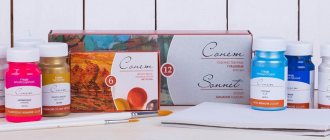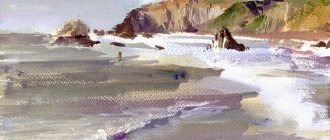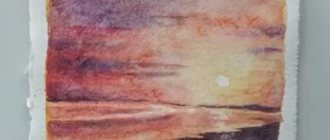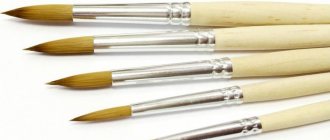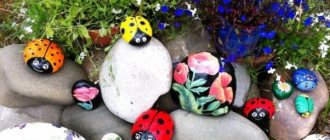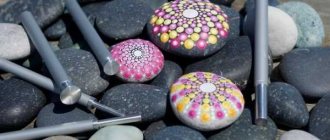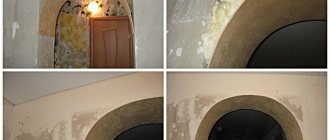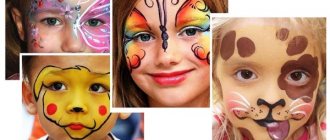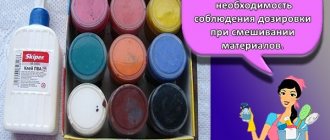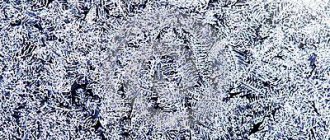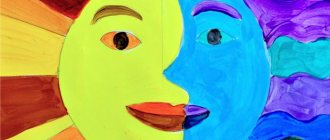Looking at the paintings of famous artists, you involuntarily admire their creativity and ability to depict the world around them in bright colors. Each of us can also try to master the art of drawing and make this hobby our favorite pastime. Here are beautiful gouache drawings for beginners; they will allow you to test your talent in painting and master the technique of painting with paints.
What is gouache and its pros and cons
Gouache is a water-soluble adhesive-based paint with the addition of white. According to its properties, this paint is denser and more matte after drying, than, for example, acrylic or watercolor.
The technique of making gouache paints has been known since the Middle Ages, when it was used in Europe. The term itself originated in France in the 18th century (from the French Gouache - water paint).
Gouache paints are easily diluted with water and dry quickly. That is why they are preferred to be used in art classes at school and in the initial stages of learning to draw.
The paint has good hiding power and should be quite thick, so it is better not to work with this paint with glazes.
As I wrote above, gouache also contains white. This affects the color of the paint and the surface of the design after drying. The paint becomes more velvety to the touch, but the color also changes to a lighter color, different from what you see in the tube. Therefore, white should be used here with caution so as not to get too light a drawing.
Gouache brushes
The brush, like the magic wand in Harry Potter, should be perfect for its owner. Where to start choosing brushes for painting and how not to make a mistake with your choice?
To do this, hold different brushes in your hands in the store - choose the one that is most comfortable to hold in your hands. Imagine how you will sit for hours and draw and hold it in your hands - you should feel comfortable and comfortable.
In my articles, I often advise trying to paint with different brushes of different shapes. But a lot will depend on your goals - whether you are drawing a poster on whatman paper or making a small drawing in an album. For these purposes you will need different brushes, of course.
For beginners, I advise you to purchase 3-4 of the most versatile brushes, and then purchase additional ones as needed of some other shape or size.
So, the brushes you will need for painting with gouache:
- Flat brushes
Used when filling the background with paint, to create broad strokes and fill in large details (for example, when drawing a poster).
- Round and oval brushes
Depending on the pressure applied, you can change the thickness of the pile and experiment with the shape.
- Thin contour brushes
They will be useful for drawing small details.
Depending on the type of bristles, do not choose brushes made from natural bristles that are too soft. For gouache, synthetic brushes and brushes with bristly bristles are more suitable. You can use kolinsky or goat wool from natural pile, as they are more resistant to external irritants.
You can find out more about choosing brushes for gouache painting, as well as ratings by manufacturer, in this article
Sketching
For beginning artists who doubt their abilities, it is recommended to resort to the sketching method. You need to choose a simple landscape or even a world-famous painting.
The image is placed in front of the artist, whose main goal is to try to redraw the picture with detailed accuracy. Of course, if you wish, you can show your imagination and add your own ideas. Make the landscape more fantastic or, on the contrary, remove unnecessary details from it.
If the drawing seems complex, it should be printed and placed under a blank sheet of paper. Then, using a simple pencil, transfer the outlines of objects, after which the work is completed independently. So creating a beautiful gouache drawing for beginners will not be a difficult task.
Surfaces you can paint on
Gouache paints can be used to paint on various surfaces. The most important rule is that they must be thick, including the paper on which you will draw.
- The simplest and most obvious choice is paper . Quite thick paper from 180 g/m2 will do. Also, whatman paper is well suited for gouache - it is thick, has a smooth glossy surface, and the paint will fit perfectly on such whatman paper. If you are not comfortable working with a large format, simply cut the Whatman paper into smaller pieces with a utility knife.
You can read more about choosing paper for gouache painting in my other article
- You can also draw on cardboard . Due to its density, it is ideal for gouache. It is better to take white cardboard with a smooth surface.
- If you have plywood , or just a sheet of it, you can use this surface. To do this, the gouache should be quite thick, you can even add a little PVA glue to it. It is advisable to varnish the finished work to secure the result.
- You can also paint on glass Remember that gouache is a water-soluble paint, and, for example, on dishes, such a design will not be preserved. But if this is some kind of craft, or window painting, then gouache is quite suitable - it can then be easily washed off, and the result can be fixed on the craft with the same varnish for decorative work.
- on fabric , since, again, this paint washes off easily and is not durable on things that will interact with water. For fabric, it is better to take special acrylic paint “for fabric”.
Skill training
Daily drawing practice will help improve your drawing abilities. Sketches should be more complex and varied. You cannot dwell exclusively on landscapes and still lifes, otherwise there will be no progress.
If you run out of your own ideas, you can ask your acquaintances and friends. It will be a pleasure to share the results of your work with them and show your personal successes.
How to draw with gouache correctly
Gouache is a light paint that even a child can work with. It does not require any special rules or skills.
To know how to draw with gouache from scratch, remember these rules when working with it:
- Take a few cups of water to wet your brushes and not dilute the “dirt” in your paints.
- Take synthetic brushes of small sizes - flat and oval are suitable
- You can mix shades on a separate sheet of paper or plastic plate/palette
- Add whitewash little by little
- Take thick paper - from 180 g/m2
- The paint dries quickly - start painting with the background, and then add other details to the drawing
Still life drawing
This is a more difficult task. The artist will need some skill, the lack of which, however, he can compensate with diligence. We need to create a small composition.
You can use all available materials, household items (liks, pots, glasses), food (fruits and vegetables are perfect). You can place them on a tray, a piece of cloth, or simply place them against the wall.
In this case, each of the objects should be in front or behind the others. Of course, it will be much more difficult to draw this way, but also more interesting. The sketch cannot be neglected; it is more necessary than ever.
First you need to draw the outlines of the background, if, for example, the fabric is slightly curved, has folds, or wallpaper with a pattern. Draw objects located in the back, then in the front. This will help you maintain perspective and avoid minor mistakes.
The sketch needs to be carefully worked out. Adults can try to convey the convexity of objects using paint in different shades. Make the places where the rays fall lighter, the shadow areas darker. The child does not need these details.
Artist Tips
- Always move from dark to light. For example, you have a dark background, purple, on which light objects are depicted - vases, fruits. Paint in the tone first, and then paint in the light objects, adding highlights at the very end.
- To paint with gouache you don't need a lot of water like you would with watercolor. Wet the brush a little in water - the paint should lie tightly on the surface.
- When mixing shades, use the Itten color wheel - it will help you avoid “dirt” and mixing the wrong color.
- Errors in the drawing can be corrected. To do this, wait for the paint to dry completely, then use a damp brush to remove unnecessary paint from the paper and paint it with a new color.
- Use bright colors. Since they will still become lighter after drying, do not use pastel shades so that the drawing does not seem faded.
Drawings for children
It is customary to separately highlight the category of drawings for children. Objects in such images are often devoid of shadow, and bright colors are used. The child must be interested in the process. With the right approach, he will not get bored and over time he will begin to draw simple pictures.
For the first time, you need to choose the most fascinating images to sketch: popular children's characters, fairy tale and cartoon characters.
Let the baby try to show his imagination; don’t limit his imagination. The main thing is to instill in children a love of creativity from a young age, then in the future they will be able to do it professionally.
